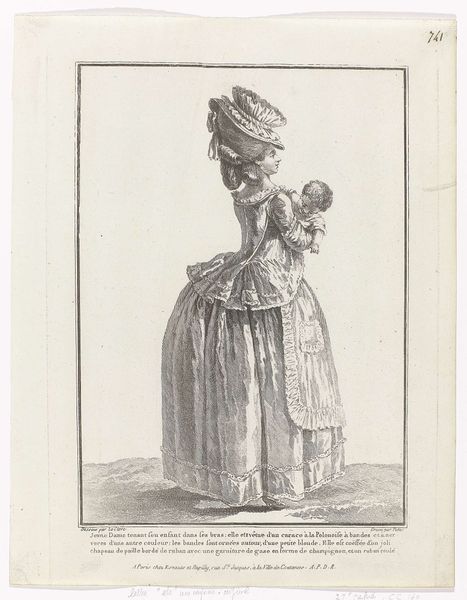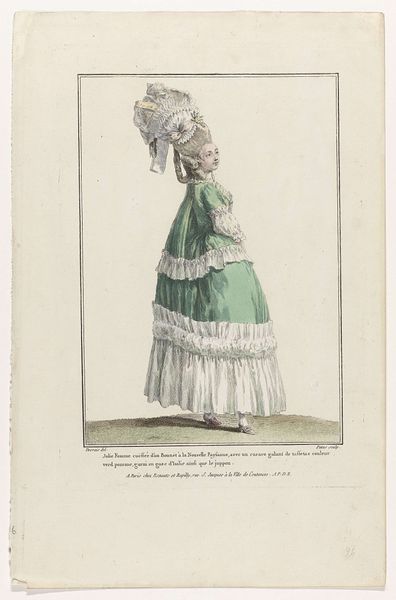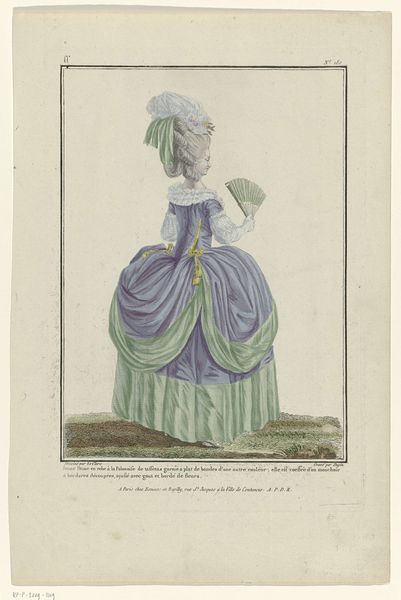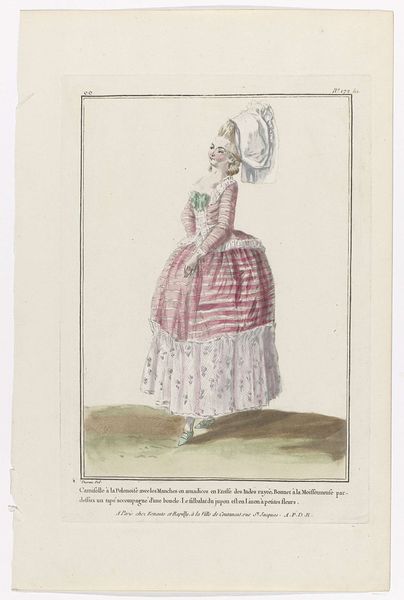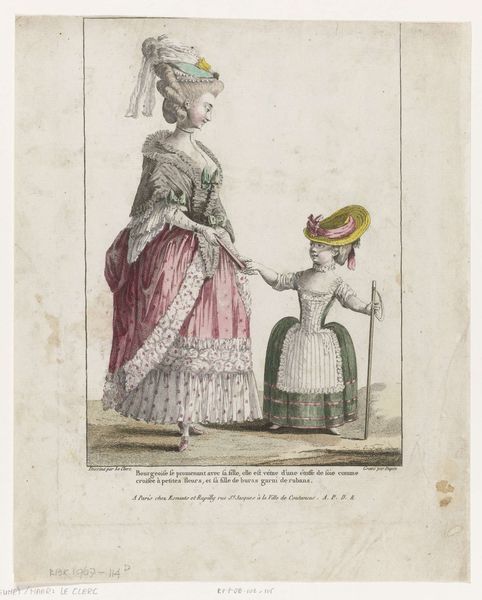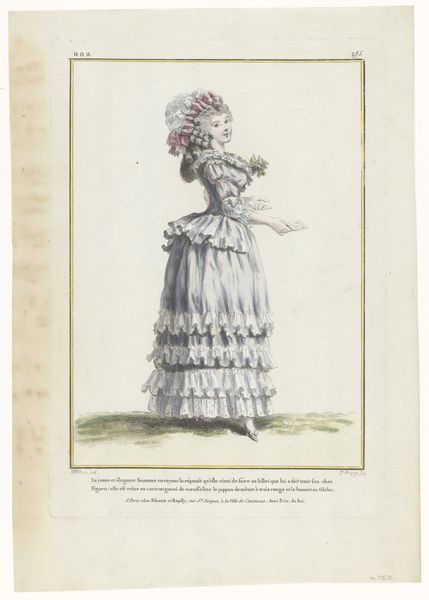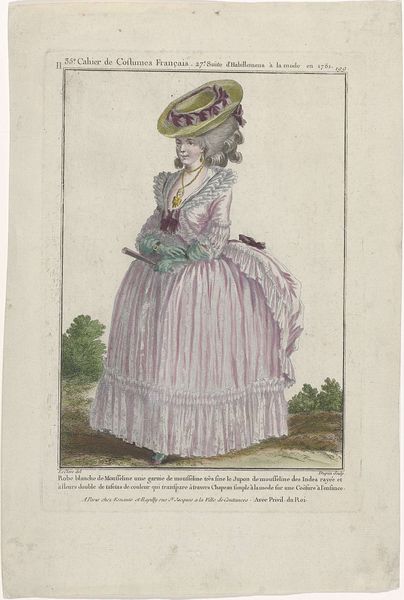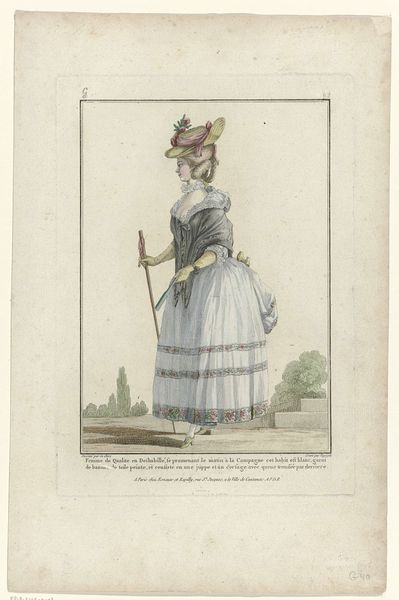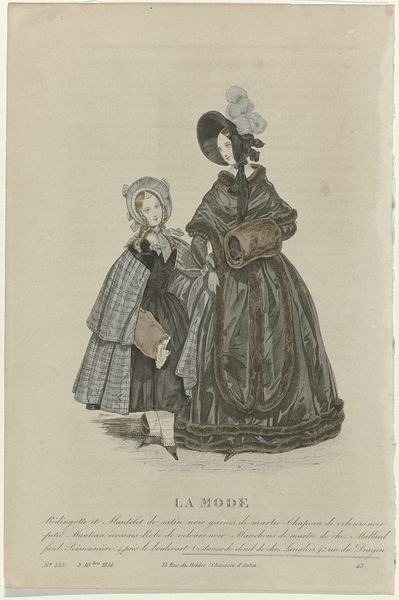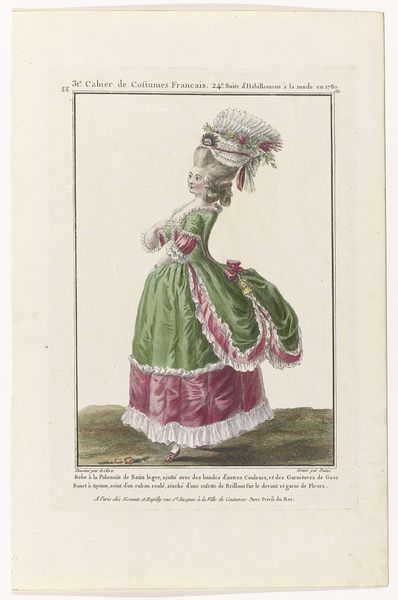
Gallerie des Modes et Costumes Français, 1779, cc 160 : Jeune dame tenant son enfant (...) 1782
0:00
0:00
Dimensions: height 290 mm, width 207 mm
Copyright: Rijks Museum: Open Domain
Curator: At first glance, the palette strikes me – a soft blend of lilacs and yellows that feels remarkably delicate, almost like a faded dream. Editor: We're looking at "Gallerie des Modes et Costumes Français, 1779, cc 160 : Jeune dame tenant son enfant (...)," a watercolor print from 1782 by Charles Emmanuel Patas. These fashion plates offer us a fascinating glimpse into the material culture of the late 18th century. Think about the labor involved, from textile production to the artisan skills required for both clothing manufacture and the printmaking process itself. Curator: Indeed, focusing on its pure visual design, there is such an arresting rhythm to the image created by the contrasting textures: the flowing folds of the dress and the stiff, almost architectural construction of the enormous headwear, crowned with a plume. There's a certain visual wit, juxtaposing the modern aristocratic woman in an iconic rococo manner alongside her child, evoking tenderness and grace. Editor: I see a social commentary embedded in these very choices. This is not just an illustration of beauty or status. The fashion plate reflects the economics of aspiration—the rising merchant class mirroring the trends set by the aristocracy. This kind of intricate print production and its wide circulation created and democratized "good taste." It also codified norms and perpetuated power structures, I imagine. Curator: I'd like to observe that the colour palette plays a central role, because the lilac and golden embroidery create harmony, emphasizing a sense of lightness that resonates from the figure's posture to the composition itself. It is no doubt intended to elicit admiration and emulation. Editor: But who exactly is doing the admiring, and in what context? These fashion plates often ended up in the hands of dressmakers and merchants, so their practical function went well beyond simply dictating visual desire and, therefore, affected real-world production and economic opportunity. They are documents of consumption as much as aesthetic enjoyment, tools of promotion and profit. Curator: Perhaps the beauty and social impact of these artifacts aren’t mutually exclusive. Editor: Precisely, considering the economic structures surrounding production, display, and dissemination can allow one to find a new, compelling beauty.
Comments
No comments
Be the first to comment and join the conversation on the ultimate creative platform.
